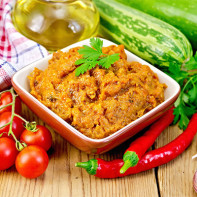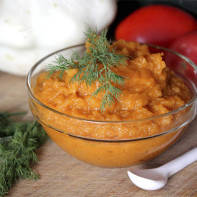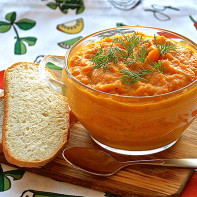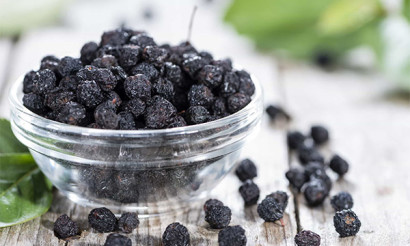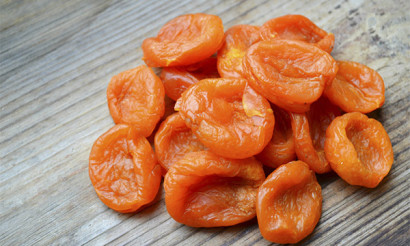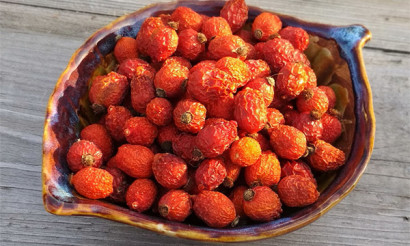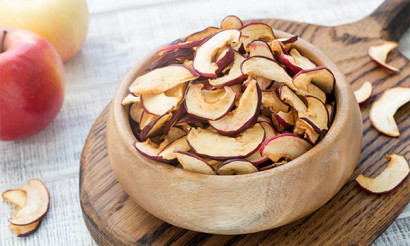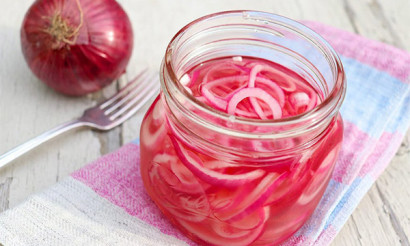How to cook zucchini caviar: 10 recipes
Zucchini caviar is a real storehouse of vitamins and nutrients. Thanks to easily digestible qualities, it is highly regarded among nutritionists and takes pride of place on the dining table. The vegetable contains a large amount of protein, potassium, magnesium, iron, as well as pectin and ascorbic acid. In addition, it is a very tasty product with a variety of cooking methods.
- How to choose zucchini for caviar
- What is useful squash caviar
- For women
- For men
- During pregnancy and lactation
- For kids
- When losing weight
- For constipation
- With cholecystitis
- With gout
- With pancreatitis
- With gastritis
- For the heart system
- With diabetes
- With cholelithiasis
- With kidney disease
- For the gastrointestinal tract
- Contraindications squash caviar
- What does squash caviar combine with?
- How to cook squash caviar: recipes
- Classic caviar
- For winter
- Caviar with mayonnaise
- Caviar with Tomato Paste
- In a slow cooker
- In the oven
- Unusual squash caviar for the winter
- Pumpkin squash with pumpkin
- Squash caviar as a store
- Squash caviar with cherry plum
- Cooking secrets
- Why is the dish called caviar
- Features of storage of blanks
- Shelf life
- Freezing
- Zucchini storage
- History and interesting facts about zucchini
How to choose zucchini for caviar
For the preparation of caviar from zucchini, it is better to give preference to small vegetables. In this form, they are used as a whole, together with the skin and seeds. Wash them well enough and start cooking. If you choose a more mature zucchini, you need to peel it from a thick peel and remove the seeds, because they are already hard.
When choosing zucchini for caviar, you need to pay attention to weight. Feels like they should seem harder than in appearance. In a quality product, the peel is shiny, without flaws and punctures.
Before cooking, the zucchini does not need to be soaked; it is enough to wash it well under running water. This vegetable contains a large amount of moisture. To remove the excess, you need to clean and grind it, salt and leave it for 15 minutes in a cool place. Before cooking, it remains only to squeeze out the allocated juice.
Zucchini caviar appetizer has many recipes and cooking methods. With the help of various spices and vegetables, she can radically change the taste, color and aroma, depending on preferences.
What is useful squash caviar
The increased saturation of vitamins and microelements in the squash caviar allows you to accumulate a large amount of vitamins in the body and can adequately become an analogue to pharmacy products.
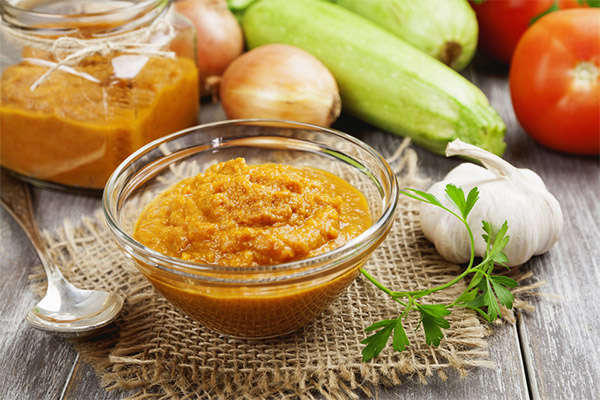
Thanks to potassium in the composition, caviar from zucchini is useful in the fight against edema, disorders of the gastrointestinal tract and gall bladder. Vitamin C provides a beneficial effect on the body's immune system and cardiovascular function. Also, this vegetable should be added to the diet for people with chronic allergies and asthmatic diseases. Using fiber, squash caviar helps to saturate the body with nutrients and satisfy the hunger, while this product contains a minimum of calories and does not lead to excess weight gain.
Squash caviar is beneficial in various diseases: pyelonephritis, atherosclerosis, chronic colitis, gout, gastric tract disturbance, hypertension. The dish is considered low-calorie, which allows you to use it in any quantity.
Beneficial features:
- withdrawal of salts, excess fluid;
- toxins and toxins;
- purification of blood vessels and internal organs;
- strengthening immunity;
- raising the tone of the body;
- normalization of the gastrointestinal tract;
- lower cholesterol;
- blood sugar regulation;
- blood renewal;
- improved metabolism.
What else is useful vegetable:
- Caviar from fruits is widely used for the prevention of diabetes, atherosclerosis and heart disease.
- Folic acid eliminates homocysteine (a byproduct of metabolism). If homocysteine is exceeded, a heart attack may occur.
- Manganese and Vitamin C contribute to the health of the heart and blood vessels.
- A combination of potassium and magnesium will help lower blood pressure.
- Beta-carotene and vitamin C are necessary to prevent the oxidation of cholesterol, which eliminates the development of atherosclerosis.
For women
The components of squash caviar for the fair sex are invaluable, even after heat treatment, the beneficial properties are preserved and have a beneficial effect on the woman's body:
- compensation of estrogen during menopause;
- breast disease prevention;
- maintaining hormonal levels;
- elimination of menstrual symptoms;
- preservation of youthful skin;
- prevention of obesity and the appearance of skin pigmentation.
For men
For men suffering from hemorrhoids, it is useful to introduce caviar of such a vegetable into the diet. Due to its mild laxative effect, it helps to get rid of toxins and toxins and helps to remove feces from the body. Squash caviar also prevents the development of prostatitis.
During pregnancy and lactation
- Squash pulp contains the optimal amount of folic acid, which is important for the nutrition of a pregnant woman and the development of the fetus.
- The composition of caviar from zucchini includes carrots, which ensures the intake of such a vitamin as beta-carotene, the use of which improves blood circulation, helps relieve stress and eliminate insomnia.
- To ensure the formation and structure of the fetal cardiac system, potassium is also needed, which is also contained in caviar from zucchini.
- Calcium provides the structure of the skeleton of the child and the formation of teeth and bones.
One of the most common problems in bearing a child is constipation. Zucchini delicately and gently solve this problem and normalize the stool.
If you eat zucchini caviar constantly, the expectant mother will feel much calmer, and her immune system will increase, which will prevent colds. Due to the restoration of cardiac function, a woman feels cheerful and full of strength. The mood improves, working capacity increases and a surge of energy is observed.
Due to its hypoallergenic properties, squash caviar is popular for breastfeeding, but it is better not to buy store goods, preferring homemade recipes. After preparing the squash caviar, it must be laid out in a resealable container and consumed after three days. It is important after the first use of the product to pay attention to the condition of the baby. If nothing bothers him, there is no redness, you can safely eat squash caviar.
For kids
Zucchini is one of the first foods for feeding a baby. Of course, for baby food it is better to cook caviar yourself. The usefulness of caviar from zucchini for children is a high amount of dietary fiber, contributing to the normalization of daily emptying. Especially useful is the introduction of such a product into the diet with insufficient fiber intake.
Vitamin C helps the body fight colds and strengthen the immune system.
When losing weight
Calorie squash caviar is less than 95 kcal per 100 g of product, which allows you to use this dish for weight loss and diets. With the help of such nutrition it is easy to saturate the body without loading it with heavy food. The fiber content in caviar from zucchini promotes the release of toxic substances and toxins, and also satisfies hunger.
Women are increasingly using squash diets to lose weight. This method allows you to lose weight up to 5 kg in just a week. The main rule of such a diet is the exclusion of potatoes, flour products, sweets and sugary drinks, replacing them with various vegetables and, of course, squash caviar. With such a diet, it is important to add protein to the diet, it can be turkey or chicken meat. Do not forget about water, it must be supplied in sufficient quantity and naturally cleanse the body.
For constipation
To establish a daily chair, caviar from zucchini is a very accurate, effective and safe way. It is enough to eat 3 tbsp. dishes with each meal so that the effect is ensured.If the problem is more neglected, you can add a few drops of vegetable oil, provided that the person does not suffer from other problems with the stomach (bleeding or intestinal obstruction).
With cholecystitis
With a similar disease, squash caviar is not contraindicated. On the contrary, the vegetable has the ability to remove stagnation of bile, thereby reducing the load on the liver. In order for the product to bring more benefits, it is better not to fry, but stew. With this cooking method, a maximum of vitamins and antioxidants is preserved, which delay the aging process.
With gout
With such a disease, the use of caviar from the fruits of squash takes place, but should be limited to no more than two times a week and 100 g per day. The main contraindication of this dish is the presence of tomatoes in its composition. When cooking, it is better to reduce the number of tomatoes and exclude the addition of hot seasonings and garlic.
With pancreatitis
In connection with the addition of tomatoes and carrots to squash caviar, often such food has contraindications for pancreatitis, especially at the peak of exacerbation of the disease. Some housewives add vinegar to the composition of the caviar, which can provoke the development of the inflammatory process. Separately, zucchini can safely take their place in the diet of a person suffering from pancreatitis.
If the disease is in remission, then you can diversify your diet and add zucchini caviar. The main thing is that the preparation of the product is carried out at home. It is better to choose stew as a cooking method.
With gastritis
The optimal composition of this vegetable allows you to include it in the diet of people suffering from gastritis. Zucchini has the ability to regulate the metabolic process and has a positive effect on the gastrointestinal tract. With gastritis, doctors are allowed almost any dish based on zucchini. The only prohibition may be the addition of garlic, vinegar and spicy seasonings to the dish. It is also recommended to prefer stewing instead of frying.
For the heart system
A high iron content improves oxygen supply to the blood and has a beneficial effect on the cardio-muscular system. A sufficient iron content in the blood provides the body with oxygen, which makes the heart more resistant to stress.
With diabetes
With this disease, zucchini is one of the products that must be introduced into the diet. The substances contained in it are necessary with an increase in glucose in the blood. Due to the ability to remove salts from the body, the product is useful if there are puffiness that often accompany diabetes.
When cooking squash caviar, you need to reduce the amount of carrots, replacing the composition of cabbage or zucchini. It is better if you replace the sunflower oil with olive, reduce the amount of salt and add greens.
With cholelithiasis
Zucchini can be used for cholelithiasis, they serve as a prophylaxis from such an ailment. Vegetable well removes cholesterol from the body, which prevents the formation of stones.
With kidney disease
Zucchini caviar is extremely useful for kidney diseases. It has the ability to remove excess fluid and salts from the body, and reduces swelling.
For the gastrointestinal tract
People with gastrointestinal diseases are strongly recommended to use such a beneficial and low-calorie product as caviar from zucchini. The vegetable helps to normalize the intestinal microflora, removing harmful substances, toxins and toxins from it. Due to the mild laxative effect, caviar relieves the body of feces, which often provoke the inflammatory process.
Contraindications squash caviar
Refuse to eat such caviar is necessary only with individual intolerance of the components. Most often it is carrots and tomatoes.
In most circumstances, harm to the body is caused by a store product of insufficient quality containing dyes, stabilizers and preservatives.These additives are dangerous and can provoke the development of oncology. Even if the manufacturer adheres to the norms and standards of preparation, the addition of starch, flour, flavor enhancers and other components that are not beneficial to the body is acceptable. Therefore, it is better to prefer homemade recipes.
What does squash caviar combine with?
Zucchini caviar can be enjoyed for breakfast, lunch and dinner. It is combined with all kinds of meat, potatoes or cereals, great for the first meal in the morning, complementing an omelet or sandwich. Caviar harmonizes well with various pickles or lard. Often this dish is served with vermicelli or pasta.
Zucchini caviar can be used as a separate dish or to complement any side dish, which is why it is very popular during fasting. She fights well with hunger and remarkably saturates the body.
How to cook squash caviar: recipes
These recipes are very popular. Ready meals can be served to the table after cooking or used as a preparation for the winter. The cost of such a meal is budgetary, especially if it is cooked in the summer season.

Classic caviar
Composition:
- 3 kg of squash;
- 1 kg of carrots;
- 1 kg of onion;
- 5 pieces. Tomatoes
- 1.5 tbsp salts;
- 1 tbsp Sahara;
- 1 tsp citric acid;
- 200 ml of vegetable oil;
- spices to taste (ground pepper, bay leaf).
Cooking Instructions:
- Wash the fruits of zucchini, cut ponytails, cut into circles and fry on both sides.
- Peel and grate carrots.
- Cut the onions into rings and fry with carrots.
- Allow all components to cool, then grind the ingredients with a meat grinder or food processor and put in a cooking container.
- Pour salt, sugar, tomatoes, citric acid, seasonings. Stir until smooth and cook on moderate heat for 15–20 minutes.
- Add herbs and garlic to taste.
For winter
Composition:
- 3 kg of squash;
- 700 g carrots;
- 700 g of onion;
- 5 pieces. tomatoes (you can replace 2 tbsp. tomato sauce);
- 200 ml of water;
- 300 ml of sunflower oil;
- 3-4 tbsp vinegar
- 2 tbsp salts;
- 3 tbsp Sahara;
- spices to taste (ground pepper, bay leaf).
How to cook:
- Wash zucchini, cut ponytails. If the fruits are young, cut into cubes, if ripe - peel and select seeds, then grind with a meat grinder or combine.
- Peel and grate carrots.
- Peel the onion and cut into small squares.
- Peel the tomatoes from the peel, and crush the tomatoes themselves in a mortar or grate.
- Mix components well until uniform, pour in water and put on moderate heat. Boil for 30 minutes.
- Pour in oil, tomato sauce (if tomatoes are not included), salt, sugar, spices. Stew caviar for 35–55 minutes on low heat until thickened.
- Pour vinegar a few minutes before ready.
- After removing from heat, immediately decompose the finished eggs into a sterile container and roll them up.
Caviar with mayonnaise
Would need:
- 3–3.5 kg of squash;
- 250 g mayonnaise;
- 500 g of onion;
- 250 g of tomato paste;
- 250 g of sunflower oil;
- 2 tbsp salts;
- 0.5 cups of sugar;
- 0.5 tsp ground pepper;
- laurel.
Cooking:
- Wash the fruits of zucchini, cut ponytails, peel and select the seeds, then just pass the pieces of the vegetable through a meat grinder (or you can use a food processor).
- Chop, peel the onion and immediately send the vegetable to the zucchini.
- Add oil, add mayonnaise and lay out the above amount of tomato paste.
- Mix all products and put the cauldron on fire.
- Stew for 1 hour. Then add all the seasonings: salt, sugar, pepper, laurel and continue to cook the vegetable mass for another 60–70 minutes.
Ready caviar can immediately be served on the table hot, wait until it cools, or roll up in banks for the winter.
Caviar with Tomato Paste
Would need:
- 6-6.5 kg of zucchini;
- 3 cloves of garlic;
- 500 g of tomato paste;
- ½ tbsp sunflower oil;
- 3 tbsp salts;
- 200 g of sugar;
- 0.5 tsp ground pepper;
- Bay leaf.
Cooking:
- Wash the vegetables well under running water, cut off the tails, peel off the peel and select the seeds.After skipping zucchini through a meat grinder.
- Transfer the mass to a container that is selected for stewing, add oil, tomato sauce and all seasonings.
- Send to a small fire and simmer for about 30–40 minutes.
- 5-7 minutes before ready to add finely chopped garlic.
In a slow cooker
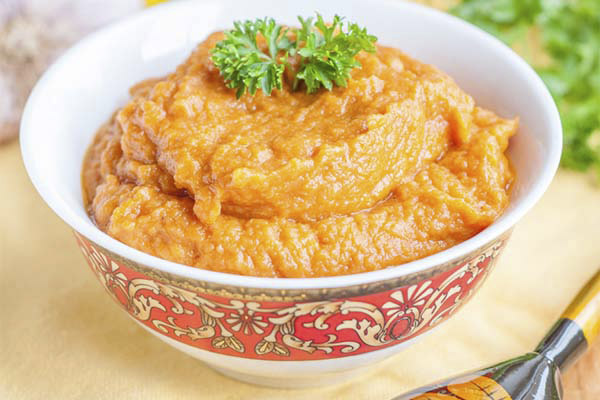
Would need:
- 2–2.5 kg of squash;
- 120 g carrots;
- 80-100 g of onion;
- 190-200 g of tomato paste;
- 90-100 g of sunflower oil;
- 10 g of salt;
- 20 g of sugar;
- spices to taste.
Cooking:
- Wash the fruits of zucchini, cut off their tails. If the vegetables are young, cut into cubes immediately. If overripe - first, be sure to peel and select all the seeds inside. After grind using a meat grinder.
- Wash the carrots thoroughly. Then peel and grate by hand on a coarse grater.
- Chop the onion, preferably in small cubes.
- Pour the oil into the bowl of the multicooker and fry a little slices of zucchini there.
- Put the vegetables on a plate and separately in a bowl, fry the onions and carrots together, then combine all the ingredients.
- Grind the entire mass with a blender and then put the stew in a slow cooker for about 45-60 minutes, without closing the lid.
- After pouring all the seasonings. Stew for another half hour.
Allow to cool and you can eat.
In the oven
What is required:
- 3 pcs. medium-sized zucchini;
- 3 pcs. medium carrots;
- 3 pcs. Luke;
- 3 pcs. sweet pepper;
- 5 pieces. Tomatoes
- 120 g olive / sunflower oil;
- 10 g of salt;
- 20 g of sugar ;.
- spices to taste.
Cooking:
- Wash the fruits of zucchini, peel and peel, cut into four parts and put on a baking sheet.
- Peel the carrots, cut into small slices with longitudinal slices and add to the zucchini.
- Wash the pepper, select the core, cut into longitudinal parts and put on the baking sheet to the rest of the ingredients.
- Peel the onion, cut into 4 parts and put on a baking sheet with the rest of the ingredients.
- Add medium sliced tomatoes.
- Pour all the ingredients with sunflower oil and put in the oven at 180 ° C for 60 minutes.
- Remove the vegetables into a metal container with a slotted spoon (you will no longer need the juice that has stood out), add sugar, salt, spices and beat with a blender.
- Put on fire, bring to a boil. If you want to leave such zucchini caviar for the winter, add 3 tbsp. vinegar and put in jars.
Unusual squash caviar for the winter
Composition:
- 5 kg of squash;
- 1 kg of carrots;
- 1 kg of onion;
- 500 g mayonnaise;
- 0.5 kg of tomato sauce;
- 200 ml olive / sunflower oil;
- 0.5 tsp ground pepper;
- 100 g chicken seasoning;
- 0.5 tbsp. garlic.
Order of preparation:
- Rinse and peel the fruits of zucchini, onions and carrots.
- Grind and knead well using a meat grinder or food processor.
- Cook for 2 hours over low heat.
- Pour in mayonnaise, tomato paste, seasoning, pepper and sunflower oil. Mix and leave to cook for half an hour.
- After adding garlic, cook for 10 minutes.
- Arrange on sterilized containers and roll up.
Pumpkin squash with pumpkin
Ingredients for the harvest:
- 400 g squash;
- 350 g pumpkin;
- 3 pcs. sweet pepper;
- 1 tbsp tomato sauce;
- 50 g olive oil;
- 0.5 tsp ground pepper;
- 2 cloves of garlic;
- 1 tbsp salt.
Cooking:
- Rinse pumpkin and zucchini, peel and seeds, cut into large pieces and put on a baking sheet.
- Wash the pepper and send the whole to the other ingredients on a baking sheet.
- Peel the garlic, add to the common baking sheet and pour all the ingredients with oil.
- Place vegetables in the oven at 180 ° C for half an hour.
- Take out the vegetables and put them in a chopping bowl. Pepper previously peeled and seeds.
- Grind with a blender.
- Add salt, tomato sauce, garlic and pepper. After boiling, cook for 35 minutes until thickened.
Squash caviar as a store

Composition:
- 3 kg of squash;
- 1 kg of carrots;
- 1 kg of onion;
- 3 tbsp tomato paste;
- 50 g of vegetable oil;
- 1 tbsp vinegar
- 1 tbsp fine salt.
Cooking:
- Clear all ingredients and remove ponytails.
- Submit in turn to the frying pan.
- Grind the fried components using a blender or food processor.
- Send to a large pot, salt and put on fire.Cook for 40 minutes.
- After 20 minutes after boiling add tomato sauce and vinegar.
- Pour into sterilized containers and roll up.
Squash caviar with cherry plum
Composition:
- 1 kg of zucchini;
- 1 PC. chili peppers;
- 2 pcs. Luke;
- 6 pcs Tomatoes
- 3 tbsp vegetable oil;
- 200 g cherry plum;
- 2 tbsp Sahara;
- 1 tbsp salts;
- 3 cloves of garlic.
Cooking according to instructions:
- Wash the cherry plum, pour boiling water and blanch for 4 minutes.
- Cut the onions into small cubes.
- Peel and grate the squash.
- Send the onions to a pan with butter and fry for 5 minutes, then add the zucchini and fry for 20 minutes.
- Grind tomatoes with a blender.
- Pour cherry plum in a pan with vegetables.
- Add mashed tomato, sugar, salt and put on fire for 10 minutes.
- Grind the garlic and chili pepper and add to the general container.
Allow to cool and you can eat.
Cooking secrets
- Before cooking, you need to put the ingredients in one large container and let them empty the juice. Then stew the future dish in its own juice.
- Vegetable oil should be infused at the end of cooking. This will make zucchini softer and more delicate. Thanks to this method, heartburn will not bother.
- If you vary the zucchini with eggplant and squash, then the taste will be much more unusual and saturation. A good solution would be to add tomatoes along with tomato paste and bell pepper. The more vegetables - the tastier.
- Fans of caviar should prefer recipes with lots of carrots.
- If citric acid or vinegar is not included, the shelf life is shortened.
- If you want to use a dietary option, you need to abandon frying, preferring stewing products.
- The addition of apple cider vinegar instead of the usual table will make the caviar more flavorful.
Spices & Additives
- The main criterion that you need to rely on when choosing spices is an individual preference and your own taste.
- Dill and cilantro go well with squash caviar. Often chopped ginger or garlic is added during cooking.
- Very tasty combination with apples. For this recipe, you need to add only one fruit or replace half the amount of onion with apples.
- Cloves, cinnamon and coriander will greatly improve the taste of the finished dish. You can also add bay leaf by putting it in a jar before filling with zucchini caviar.
Why is the dish called caviar
In appearance, caviar from vegetables resembles fish. The meaning of the word “caviar” means “food” or “a dish of finely chopped ingredients” (vegetables) that have been cooked. Also, the common name for such foods is paste or mashed potatoes.
Features of storage of blanks
An important component of winter blanks is their storage. One of the main criteria is the choice of quality ingredients. If you choose the right vegetables, they will behave wonderful in canned form.
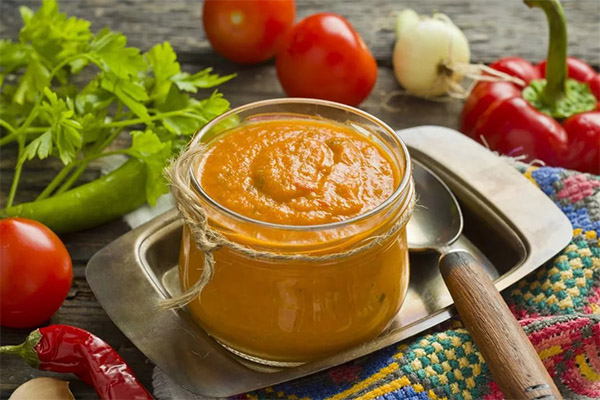
The second thing you need to pay attention to is the storage location and temperature. The best place would be a basement with a temperature of 0 to 15 degrees. It is almost impossible to store preservation in an apartment. Consider the basic storage rules:
- Cans with preservation should be placed in a cool, dry place, away from heating appliances. The room should be ventilated and protected from excess moisture. Storage on the insulated balcony is possible.
- Cans cannot be stored at sub-zero temperatures, otherwise there is a risk that they will crack. If there is little preservation, it can be placed in the refrigerator.
- Note! It is important to prevent direct sunlight.
After seaming the preservation and determining its storage location, it is necessary to periodically check its condition.If there is turbidity, foam or bubbles inside the jar - it means that the product inside has deteriorated and must be disposed of. It is also unacceptable to use a blank with a swollen lid.
Before placing the workpieces, check the quality of the seaming. To do this, turn the jar upside down and check for leaks. If necessary, roll up the can again.
Shelf life
Canned vegetables can be stored from a month to one year. With proper storage organization, the workpieces remarkably retain their quality and taste and delight us until spring.
If you intend to use a purchased product, be sure to pay attention to the expiration date and date of manufacture. Squash caviar should be produced in the ripening season of the vegetable, namely in summer or early fall. If the label indicates the production time from November to May, it is worth doubting the quality and naturalness of the products. To give a choice is glass, transparent jars. Thus, you can see the color and texture of caviar, the presence of foreign impurities. It is necessary to pay attention to the inscriptions about the sterilization of the product, if it is absent, it is better to avoid such a purchase. After opening, caviar must be refrigerated for no more than three days.
Freezing
Zucchini caviar can be frozen. But only if such a home-made dish. Before freezing, it is necessary to cool the product, put it in a container or plastic bag and close it carefully. Subsequently, freezing caviar from zucchini does not lose its taste and texture. Often, after thawing, vegetable oil is released, you just need to mix the dish until smooth.
Zucchini storage
With proper storage, the vegetable is saved quite well. Zucchini should be put in a cool room, while avoiding direct sunlight and frost. Thus, it will be possible to cook fresh caviar from zucchini throughout the year until the new crop. The remaining ingredients (onions and carrots) have a long savings period and will delight you with their freshness and richness of taste.
History and interesting facts about zucchini
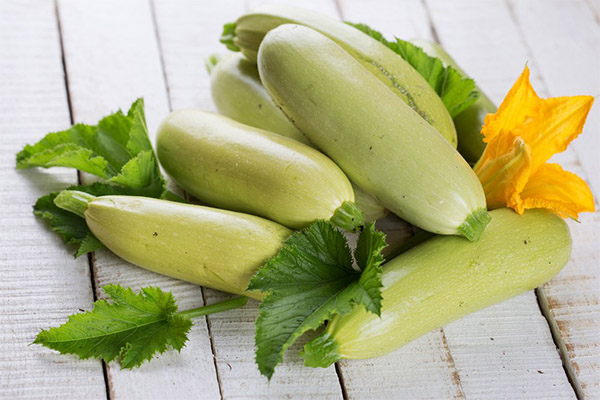
- Since the beginning of the XVI century, zucchini was only an ornamental plant.
- If you regularly eat the fruits of zucchini, gray hair for a long time will not bother.
- In France, zucchini flowers are used as the main ingredient in a unique dish.
- The content of vitamin C in zucchini is quite high, despite its not sour taste.
- Initially, only the seeds of the fetus were consumed, the pulp was to be disposed of, or it was given to the animals.
- The birthplace of the vegetable is Mexico, but Italians were the first to eat the flesh.
- The taste of mature and young vegetables is radically different.
- Wonderful facial masks are made from the pulp of zucchini, especially with dry skin.
- There are varieties that are consumed raw.
- Allergic reactions to zucchini have never been manifested.
Zucchini caviar is a common and everyday dish for each of us. Almost every hostess has her own individual way and the secret of cooking. But the variety of recipes is surprising, and we want to try new and unusual options. In addition, such dishes are tasty, healthy and cost a penny.
«Important: all information on the site is provided exclusively in fact-finding purposes. Before applying any recommendations, consult with a profile specialist. Neither the editors nor the authors are liable for any possible harm caused materials. "


